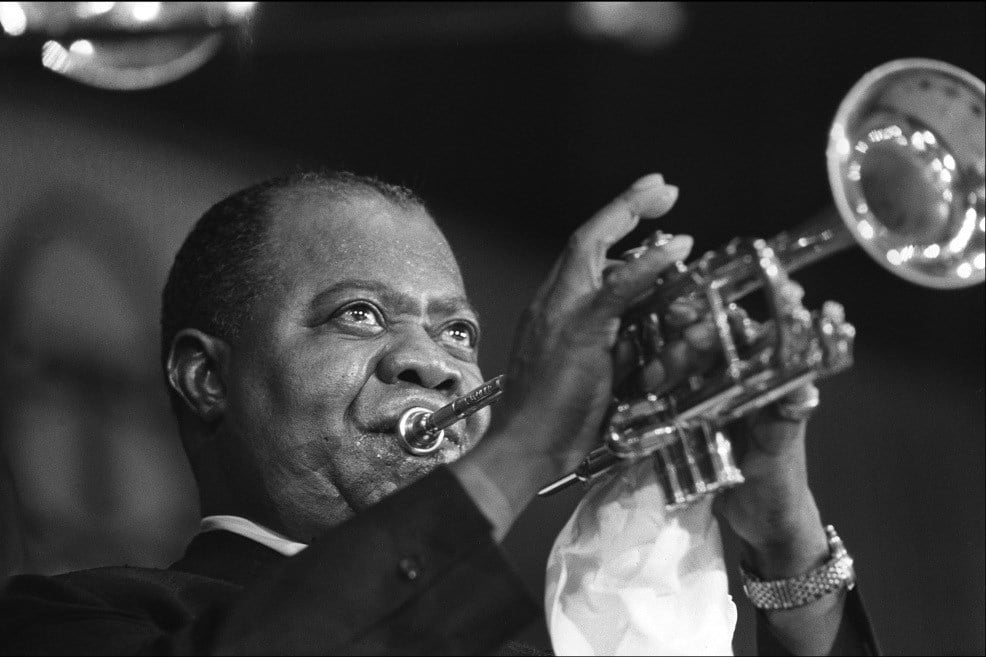La vie en noir: Louis Armstrong tapes and musical racism
In a documentary soon to be released this fall, never-heard-before tapes of Louis Armstrong are published to demonstrate the prejudice and racism he suffered in a world of music and fame that seemed like a star-studded life.
-

Louis Armstrong (PBS)
A founding father of jazz, a trumpet mogul, and a gravel-voiced singer rippling across the world, with Mack the Knife and Hello, Dolly! among his evergreen hits, Louis Armstrong preserved his own story by taping his recollections, including the prejudice he endured merely due to the color of his skin, knowing history would judge him.
Now the makers of a major documentary on the celebrated musician have been provided unexpected access to the tape archives, which include thousands of hours of previously unheard audio recordings.
In the content of those tapes, Armstrong, a.k.a Satchmo (1901-1971), spoke of being “born with nothing” and the horrors of racism. He recalls being insulted by an apparent fan – “a white boy” who approached him after a show, shaking his hand and telling him that he had all his records, before turning on him: “He said, ‘you know, I don’t like negroes’, right to my face. And so I said ‘well, I admire your Goddamn sincerity’. He said, ‘I don’t like negroes but… you’re one son of a bitch I’m crazy about.”
In another instant, he remembers a crew member who disrespected him, ordering him around during the filming of Glory Alley in 1952. Armstrong told him: “ ‘Why you hand me that s**t? Cause I’m colored?’… I didn’t appreciate it. I’m just showing you what I go through for no reason.” Armstrong emphasized that despite the majority of white people “disliking” black people, there's always one “that they’re just crazy about”.
The recordings will be heard in a forthcoming feature documentary, "Louis Armstrong’s Black & Blue", due to be released this fall following its premiere this week at the Toronto International Film Festival. Due to the high volume of tapes, the filmmakers took two years to restore, digitize and transcribe them.
The film’s co-producer and president of Imagine Documentaries, Justin Wilkes, disclosed to The Observer the amount of shock after having stumbled across the unknown material: “Starting in December 1950, Louis purchased a tape recorder and almost religiously would record his daily musings. Sometimes it’s just him talking. Sometimes it’s other people, his wife, other musicians. It was all for his own archives. On the tapes, he talks a lot about wanting to preserve his story for posterity. More often than not, his public persona was very different from what he ultimately believed. A lot of his inner emotions come through on the tapes. All those tapes have been sitting in this archive".
Wilkes added: "We have the only film footage of a recording session of him. We also have outtakes of certain songs that haven’t been heard before. Race is the number one topic that he’s grappling with, and contemplating his entire life as a black man growing up in America in the 20th century… On the one hand, he’s literally the most famous person in the world… and then, at the same time, there are still hotels where he can’t walk in the front door [and] restaurants that won’t seat him because of the color of his skin. As you can imagine, he feels very strongly about this, but sometimes tempers what he says publicly.”
Wilkes noted that only a “small group of jazz historians” had knowledge of the archive owned solely by the Louis Armstrong Educational Foundation, which also transformed his house in Queens, New York, into a museum.
In a world of music, throned by white businessmen, Armstrong recalls in one tape challenging his manager for taking the majority percentage of his earnings: “I said, ‘You might be my manager and you might be the biggest s**t and book me in the biggest places in the world... But when I get out on that… stage with that horn and get in trouble, you can’t save me.”
Ricky Riccardi, director of research collections for the Armstrong museum and the consulting producer on the film, stated: “For much of his career, fans around the world responded to the love and warmth Louis radiated on stage but, by the 1950s and 1960s, a lot of his African American fans began thinking of him as a relic, someone who wasn’t up on the civil rights movement, someone who was afraid to speak out because he was so beloved by whites. I’m hoping this film blows those notions totally out of the water.
“Hearing him in his own words – hearing hurt, hearing pain, hearing him curse – is going to be the first time many folks have ever experienced this side of Louis Armstrong. What’s important is that he is the one who left behind these tapes, so he really wanted this side to be known," the filmmaker added.
“It’s taken 51 years after his passing to get there.”

 5 Min Read
5 Min Read








